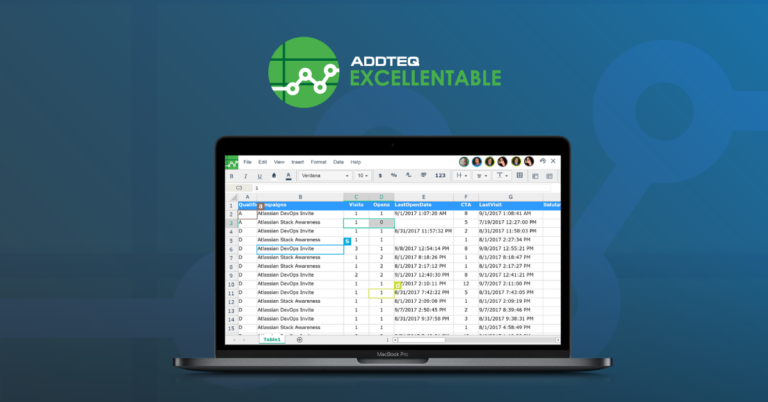
For companies looking to fuel competitiveness and enterprise agility, two concepts that are on the top of the list are DevOps and cloud. While DevOps improves collaboration between teams so applications can be developed faster, the cloud also allows access to on-demand resources so products can be scaled faster. Now imagine if you could use DevOps in the cloud. The combined benefits could really transform the way you develop software. Are you wondering how DevOps and cloud work together? Let’s find out!
DevOps on Cloud – Why, When and The Benefits
At its foundation, DevOps aims to empower developers to respond to the needs of the business in real-time, while removing much of the latency around software development.
Since teams work together towards a shared purpose, the outcome is reduced bugs, a better quality of software, and improved time-to-market. On the other hand, the cloud aims to provide resources and infrastructure required to reduce costs and drive scale. When brought together, DevOps and cloud can help meet the needs of development teams faster, with lower costs for development, testing, deployment, and operations. Here are some of the benefits of using DevOps on the cloud:
- The cloud provides DevOps teams with a standardized and centralized platform for carrying out tasks. It ensures that teams have access to all the resources they need to improve development efficiency and drive better value.
- Because teams have any time, anywhere access to critical development resources, they don’t have to wait for infrastructure to be put in place before the applications can be deployed. It, thus, eliminates the need for massive, upfront capital investments.
- Most modern cloud computing providers offer melee of continuous integration and continuous development tools. These tools ensure centralized governance and control for a sound DevOps process, while greatly reducing the costs associated with on-premise DevOps.
- The resources and infrastructure provisioned by the cloud can easily and accurately be accounted for. Usage-based reports constantly provide a snapshot of resources consumed by every application, developer, user, and more.
- With teams struggling to accelerate time-to-market, the cloud allows them to scale and scale down resources – as needed – and simplify and speed up the development process.
Best Practices
The union of DevOps and the cloud is too beneficial to ignore. While DevOps streamlines the development process so new changes can quickly be made, the cloud enables automated provisioning and scaling of resources to accommodate application changes.
However, to get the most value from the DevOps + Cloud combination, here are some best practices:
- Pay attention to security: As DevSecOps picks up pace, ensuring security while embracing the cloud is extremely crucial. Although cloud offers a whole range of security models and technologies, you need to make sure they are extended to your DevOps tools as well. Ensure security is a part of the DevOps process from the beginning, and across testing, integration, and deployment.
- Move only select applications: Irrespective of the fact that using DevOps tools on the cloud can reap substantial benefits, it makes sense to move only select applications to the cloud. Migrating to the cloud will require you to invest in purchasing licenses, refactor, rebuild or replace your apps to make them cloud-ready. Since you also have to consider the cost of migrating, start small, otherwise you won’t have enough funds to get your DevOps-Cloud project off the ground. Prioritize applications that would provide the most value if migrated to the cloud and then move applications one by one to get the best ROI.
- Embrace containerization: The application container market projected to reach $4.98 billion by 2023. There’s a lot you can benefit from embracing containerization for moving your DevOps tools to the cloud. Containerization is a great way to group applications into containers, so they can be easily managed and orchestrated. Since they allow applications to be broken into smaller manageable parts, they allow for easy migration to the cloud – while speeding up the deployment process. Containers also enable you to evaluate every aspect of your DevOps apps in detail – the architecture, performance, the environment they are currently in, as well as security details – so you can make the right migration decisions.
- Automate performance testing: Moving DevOps tools to the cloud requires you to first resolve any application performance issues that you might have. Since most issues aren’t detected until they go into production, automated testing can restrict poor-performing applications from making it to the cloud. This can not only help you in delivering bug-free products to users but also in reducing cloud costs as you wouldn’t provision additional resources to take care of mounting issues.
- Implement a version control system: Moving DevOps tools to the cloud also requires you to implement a version control system. It allows you to collaborate on code easily and efficiently track changes. With every developer having access to a source repository on the cloud, they can individually commit to every change, perform version control operations, and later merge, publish, or dispose of the changes as needed. With the comprehensive use of version control, you can ensure reproducibility and traceability and respond quickly to defects while guaranteeing high-quality software.
- Don’t aim for 100% automation – select and automate: Although most DevOps teams aim for 100% automation to drive continuous integration, testing, and deployment, when moving your DevOps tools to the cloud, be selective. Since 100% automation will require you to continuously provision resources, it can result in cloud costs getting out of control. Therefore, don’t aim for 100% automation. Instead, find activities that will benefit the most, and automate them first to contain your cloud costs and drive higher efficiency.
- Select the right DevOps tools: With an array of DevOps tools being offered by modern cloud providers, it is important to make the right selection. Since most tools are tightly integrated with the application deployment platform, getting locked into a single cloud platform can restrict you from driving real value. Select tools that are deployable on different clouds.
Conclusion
In a world where development teams are struggling to achieve growth, the DevOps + Cloud model is a great way to drive competitive advantage.
Moving DevOps tools to the cloud can allow you to get the best of both worlds. Follow these best practices to get the most from your DevOps + Cloud investment and enhance agility and time to market.




